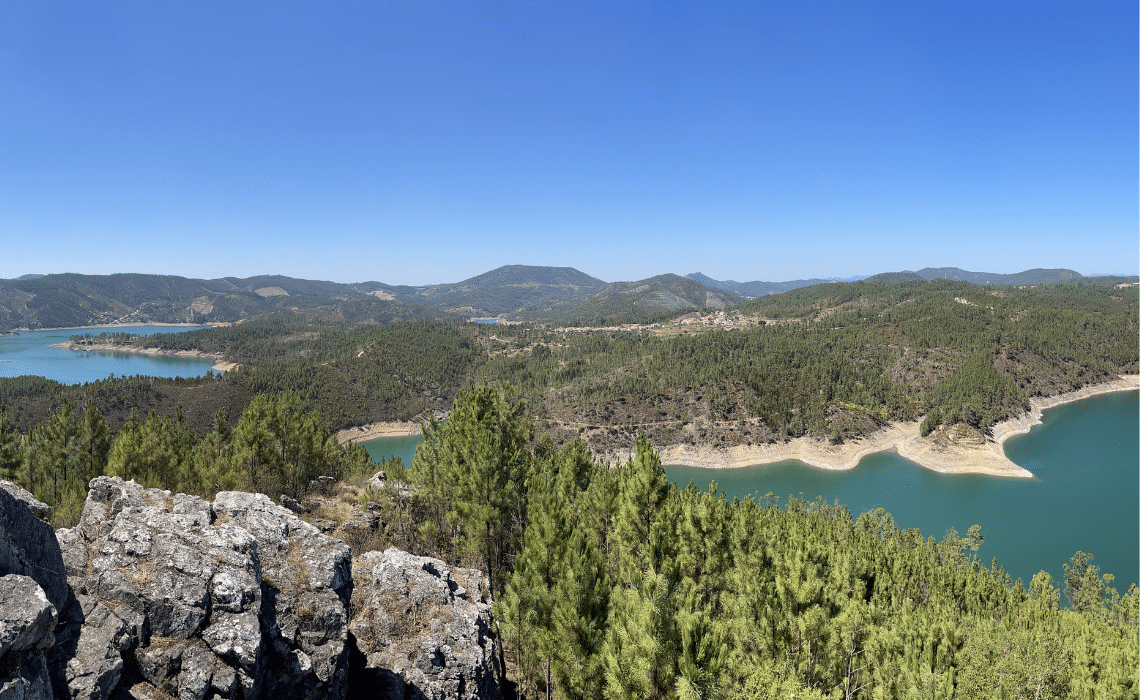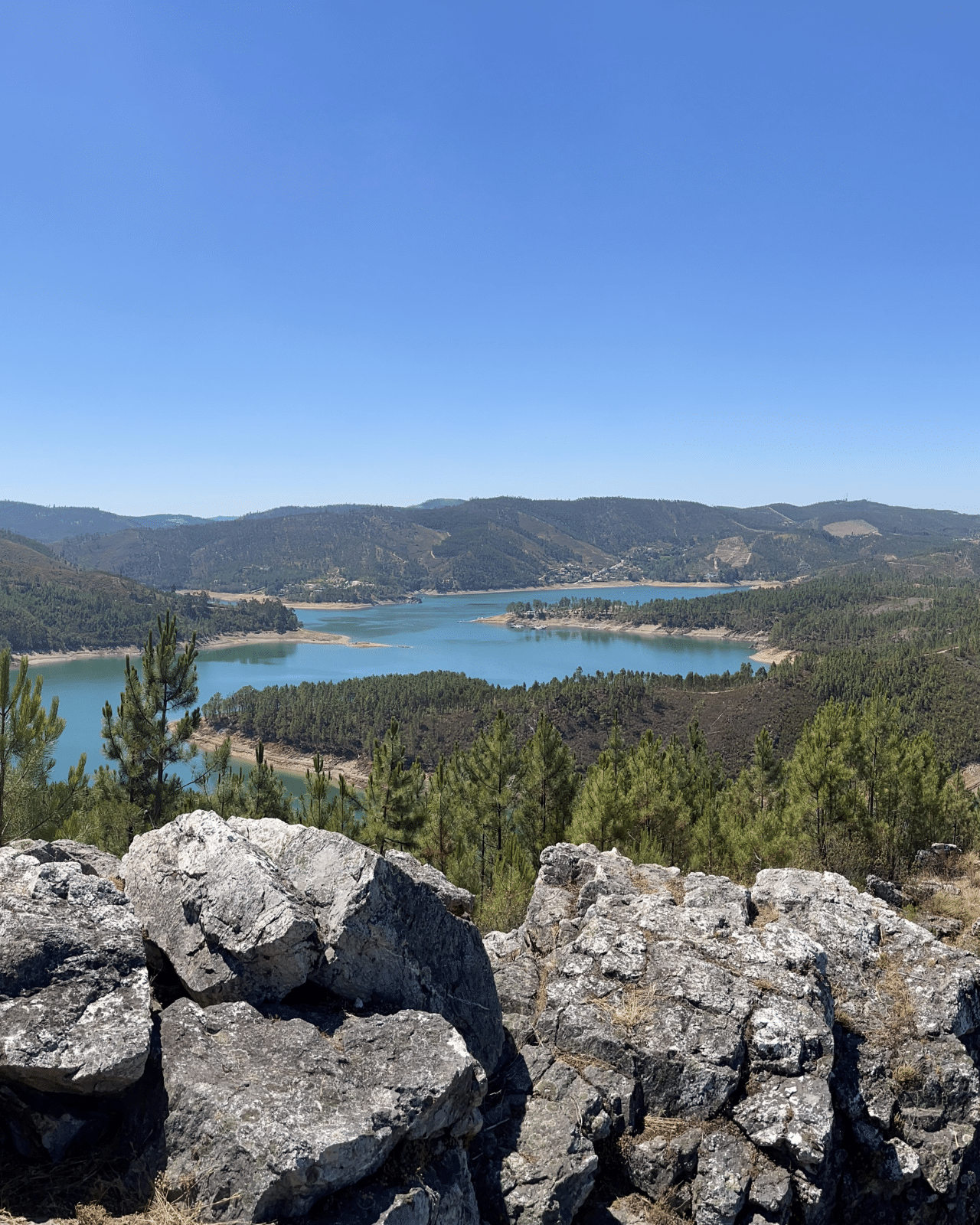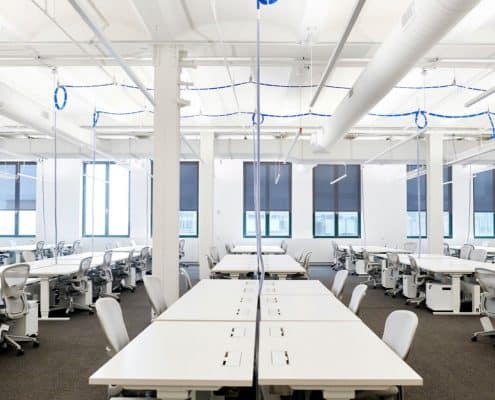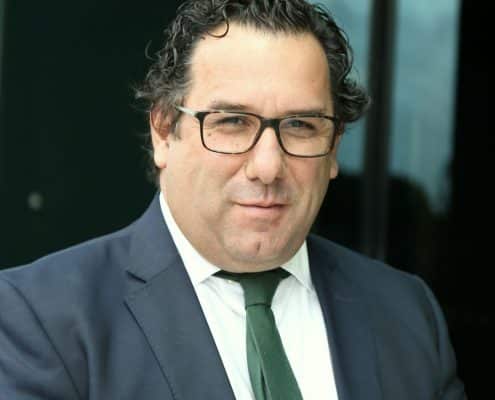O Global Executive MBA do IESE, cotado pelo Financial Times como um dos 10 melhores programas MBA a nível mundial e o 3.º da Europa, encontra-se na AESE Lisboa, de 9 a 20 de novembro de 2020.
Em conversa com o responsável académico das semanas em Lisboa
As duas semanas do GEMBA na AESE serão focadas nos temas de Empreendorismo, Economia global, Comunicação e Liderança, Operações e Finanças.
Durante este período, terão também a oportunidade de receber oradores convidados, de destacar: Mário Centeno, ex Mnistro das Finanças e Presidente do Banco de Portugal; Luís Henriques, Chairman e CEO da AICEP; Cristina Fonseca, Fundadora da TALK DESK; Ricardo M. Ferreira, Head of Investor Relations da ALTRI; Manuel Rodrigues, ex-Secretário de Estado das Finanças e Prof. da AESE; e Chef Kiko, CEO do Grupo Chef Kiko e Alumnus do PDE – Programa de Direção de Empresas da AESE.
There you are, speeding down the racetrack at over 150 miles per hour. You see the corner coming up fast, so you hit the brake and establish your straight line. You turn hardest through the apex, then slowly begin to accelerate out of the curve, following a new direction.
Preparing for a future beyond the crisis
Effective leaders are like race-car drivers. They adapt quickly to changing conditions. They’re energized by challenge and not afraid to take chances. And they can see around corners, outmaneuvering the competition.
Yet the global coronavirus outbreak has veered even the most successful leaders off course. The pandemic’s scope and scale, after all, are unprecedented, and society as we know it has effectively stopped. For many leaders, it’s the most challenging crisis they’ve had to face in their lifetimes.
The pandemic, of course, will end. But the world will look much different, which means workforces, organizations, and leadership will need to be quite different. Recovery won’t be easy. Leaders will have to weigh tough choices and make even tougher decisions. And though we can anticipate the changes, a lot still remains unknown. This means that in order to accelerate through the turn, leaders will have to keep one eye on the future—and their foot on the pedal
The “hybrid workplace” is Silicon Valley’s latest buzzword, as tech companies start giving people more options for how and when and where they get stuff done.
WFH or Work at the Office — More Tech Employees Can Now Choose
The office has become a state of mind. It’s not a place you commute to—not for many people, not anymore—unless you count shuffling down the hallway as a commute. The morning chitchat around the coffee carafe now takes place on Slack, the daily stand-ups are seated on Zoom, and the people who once shared desk space in modern open floor plans now work cubicled inside of their individual computer screens.
For plenty of people, this has worked out pretty well. They’re more productive and satisfied with their new work-from-home lives. For other people, it has been a total disaster: poor connectivity, lack of personal space, and clamoring children have all made the home office hell. So as companies think about the future, they’re tasked with decisions regarding keeping the happy work-at-homes where they are, bringing the office-forever people back, and managing the new expectations of people who want more flexibility about when, where, and how they work. Out of this, a compromise has emerged: the “hybrid workplace.”
In the hybrid workplace, some people have a permanent desk at the office, just as before, while others videoconference in. Some people work from home several days of the week and commute for the rest, maybe desk hoteling when they do. Some people keep to the nine-to-five; others make their own hours. “It’s a model of flexibility, adaptability, and shared ownership between employers and employees,” says George Penn, a VP at Gartner, which has conducted extensive market research on remote work this year. Of course, Penn says, that’s the fairly idealistic definition. “When you break down those components, what does flexibility mean? There’s room for interpretation.” (Even the term hybrid work has various interpretations: It’s also been used to describe workplaces with more automation, or ones with more contractors.)
Granted, this model only really works for knowledge workers, or the subset of work that involves things like typing, designing, and coding. Even still, the shift toward location-flexible work is significant. In its research, Gartner has found that while plenty of jobs were “remote-viable” before the pandemic, only about 30 percent of people in those jobs ever worked remotely. Now, about 48 percent of people in those jobs expect they’ll work remotely post-pandemic, some or all of the time. “And that number is creeping up,” says Penn, as more companies give people the option to continue working where they like. “I think organizations are starting to recognize that hybrid environments are not just about sustaining performance but actually improving performance,” he says. Which means managers are likely to be more supportive in the long term.
The model has taken off, in particular, among tech companies. Microsoft is now a “hybrid” company, where employees can work remotely half the time and still keep a desk in the office, or give up the desk and work remotely forever. Twitter and Reddit now allow employees to work remotely, indefinitely, but they will maintain their respective headquarters in San Francisco for employees who wish to return to the office.
Google has also moved toward a hybrid model, extending the remote work option this year while simultaneously building more office hubs around the country and proposing new construction in Mountain View, California, where the company is headquartered. “We firmly believe that in-person, being together, having a sense of community is super important when you have to solve hard problems and create something new, so we don’t see that changing. But we do think we need to create more flexibility and more hybrid models,” CEO Sundar Pichai said at a recent event. One internal survey of Google employees, from July, found that the majority—62 percent—wanted to be in the office some days. That number had crept up from 53 percent in May.
Facebook, which gave employees $2,000 stipends to kit out their home offices earlier this year, has also fashioned itself into a hybrid company. It expects that half of its employees will work remotely in the next five to 10 years—but office space is still critical for the other half. The company has even expanded its footprint: This fall, Facebook bid on REI’s brand-new, 400,000-square-foot corporate campus in Bellevue, near Seattle. REI, which laid off hundreds of corporate employees in the spring, decided it would sell the headquarters to go “remote-first.”
In the hybrid model, companies seem to be selling a corporate vision of having it all. You can have the office, with the fancy ergonomic chairs, or you can have a stipend to buy one for your house. You can come here for your meetings and see teams in person, or you can take them at home with Zoom. You can even take a little from column A, a little from column B. Based on Gartner’s research, Penn says there doesn’t seem to be a huge difference between satisfaction among people who are always remote and sometimes remote, but the option to choose where to work does seem to have an impact. Things like productivity and work-life balance generally improve when employees have the option to decide.
Still, the promise of flexibility comes with some fine print. Consider workplace surveillance. “Back in April, less than half of organizations were tracking productivity,” says Penn. “As of August, that has jumped up to over 70 percent.” Before, managers may have kept an eye on when people came and went from the office—not exactly a scientific measure. Remote work isn’t necessarily better. Mostly, Penn says, companies are tracking metrics like virtual clocking in and out, Outlook and Calendar usage, or time spent online. Now, with the pressure to always appear online, some employees are working much longer hours or wasting time on performative productivity: things like excessively chatting on Slack or setting up useless meetings, just to show that they’re there.
The model could also disadvantage employees on teams that are mostly in the office, or mostly remote, or people who want to keep different hours from the rest of their team. “Hybrid remote work perpetuates two very different employee experiences, and that can affect things like equity, inclusion, and belonging, or even career trajectory,” says Melanie Collins, the VP of people at Dropbox. Earlier this year, Dropbox found that its European employees—who had previously been the outliers on the Zoom screen—finally felt on equal footing with the Californians, because everyone was on the screen. That was a surprising upside of everyone working remotely. “Our teams in Europe have expressed how Zoom has been a great equalizer for them,” says Collins. “No one’s left out of the conversation.”
Last month, Dropbox announced that it would become a “virtual-first” company. The company plans to turn its offices into a series of meeting spaces, where teams can occasionally come together in person. Otherwise, and for the majority of the time, employees will work remotely. (It will also provide a stipend for coworking spaces, like WeWork, for employees who prefer to leave the house.) The change is significant: Before the pandemic, only 3 percent of Dropbox’s 2,300 employees worked remotely.
Collins believes that the future of work has less to do with where it’s done, and more to do with when it’s done. “Many things that were broken before feel even more broken now,” she says. “We’re working longer hours, we have back-to-back meetings, and they’re all on Zoom, and that’s exhausting.” To fix that, Dropbox is also moving toward a model where employees come together for meetings and the like during “core collaboration hours”—a four-hour window of time each day—and otherwise control their own time. “That doesn’t mean our workdays are shortening,” says Collins. “We just want this to result in a nonlinear workday.”
Other companies seem to think giving up on the office is premature, or even a mistake. Box, one of Dropbox’s competitors, has decided to go for the hybrid model. “For the most part, people want to have that flexibility,” says Aaron Levie, Box’s CEO. “They don’t want to have polarized approaches—all remote and all distributed, or everybody’s going to go back to how things were.” Levie says that while remote work might suit seasoned employees, it can be disorienting for new hires, who are trying to get to know their teammates and understand company culture. Box recently surveyed a class of new hires (which, for now, is working 100 percent remotely) to ask about their preferences for an office. “Unanimously,” Levie says, “people wanted the option to come into an office.”
It’s not hard to see why that option appeals, especially with so much uncertainty looming in the future. Even people who want to get back into an office aren’t even sure yet what that office will look like: Will their desks be exactly as they were, preserved under a layer of dust, like a corporate Pompeii? Or will everything look different, the desks double-spaced and immured in Plexiglass? The hybrid model accounts for some of that uncertainty, and for now, no one has to make any real commitments about what their personal future of work should look like. One thing that is certain: As companies in the tech world adopt the hybrid model, other industries are sure to follow.
Eduardo Paulos
Administrador da Caixa de Crédito Agrícola Mútuo de Coruche e Alumnus e co-Presidente do 18 Executive MBA AESE
Esta foi, sem duvida a pedra de toque que me fez optar por esta escola de negócios em detrimento de qualquer outra. Quando a visitei, quando olhei pela primeira vez para a sala de aulas, quando me falaram do método do caso e a forma como funcionava, não hesitei, foi amor à primeira vista! Não poderia estar em melhores mãos.
A pedra de toque
Quando em Fevereiro de 2018 fui convidado para fazer parte do Conselho de Administração da Caixa de Crédito Agrícola de Coruche, percebi que a alegria imensa que senti e o reconhecimento das pessoas que confiaram em mim e nas minhas capacidades alicerçadas por um percurso profissional e académico de que me orgulhava e orgulho, por si só não seriam suficientes para a exigência das funções e do cargo que brevemente iria abraçar.
Faltava mais qualquer coisa, e em boa hora entendi que este era o momento para concretizar um sonho antigo, contudo ano após ano adiado, fazer um MBA.
O MBA da AESE foi o caminho que decidi fazer com o propósito de consolidar conhecimentos, reforçar competências e acima de tudo desenvolver um pensamento estratégico e organizado.
Num mercado competitivo, exigente e em constante mudança, foi um privilégio realizar o Executive MBA na AESE e adquirir ferramentas adequadas à gestão do cumprimento dos objectivos e à capacidade de analisar, decidir e liderar, centrada em valores éticos e humanos sem os quais o sucesso das organizações não é possível.
A AESE é uma escola de negócios fantástica. Para além de ser a mais antiga e a melhor do nosso País, com 40 anos de história, a AESE proporciona instalações e material pedagógico e académico da melhor qualidade e proveniente das melhores fontes.
Um sublinhado muito especial para o corpo docente da AESE. É muito importante reconhecer a dedicação e a qualidade humana e profissional dos Professores que nos leccionaram em Lisboa, em Nova Iorque e em Ahmedabad, mas o destaque maior vai para a profundidade do conhecimento que demonstraram, robustecendo em larga medida o meu conhecimento e contribuindo definitivamente para ampliar horizontes permitindo-me hoje conseguir ver mais longe e chegar mais depressa.
Outro aspecto muito importante do MBA na AESE é a base de ensino estar sustentada no método do caso, uma metodologia que através de casos reais de organizações ou situações de negócios promove o debate entre os alunos sobre as decisões tomadas ou a tomar. Ou seja, a sala de aulas torna-se um palco onde nós os alunos somos os actores e em que o Caso é o guião.
Esta foi, sem duvida a pedra de toque que me fez optar por esta escola de negócios em detrimento de qualquer outra. Quando a visitei, quando olhei pela primeira vez para a sala de aulas, quando me falaram do método do caso e a forma como funcionava, não hesitei, foi amor à primeira vista! Não poderia estar em melhores mãos.
A AESE é uma escola que forma lideres, é uma escola que marca quem por lá passa e que contribui inevitavelmente para uma sociedade mais justa e humana.
Ninguém fica indiferente a esta escola e quem aqui conclui uma formação fica com vontade de voltar.
Relativamente aos meus colegas e a mim próprio, é por demais evidente a transformação que quase sem darmos por isso teve no nosso crescimento não só enquanto pessoas, mas essencialmente enquanto profissionais e lideres.
Ao mesmo tempo em que muitos falam e a maioria da população vive assustada, mergulhada numa total incerteza sobre os dias de amanhã, nós estudávamos e preparávamo-nos para enfrentar novos desafios e identificar novas oportunidades num mundo e numa sociedade em constante mudança, que vive nos dias de hoje, em termos globais e de forma simultânea, talvez a maior mudança de que temos memória.
É com muita saudade que recordo algumas sessões (aulas) de plenário, exemplarmente conduzidas pelos professores da AESE e com excelentes intervenções dos meus colegas que vou recordar para a vida.
O estudo de largas dezenas de casos, individualmente ou em equipa e o seu debate em plenário ao longo de dois anos, permitiu que um grupo de ilustres desconhecidos passasse a ser um fantástico grupo de amigos.
A ajuda permanente, a partilha de histórias, de problemas, de alegrias, de dificuldades pessoais e profissionais bem como as viagens a Nova Iorque e a Ahmedabad, contribuíram e fomentaram a cumplicidade e a amizade dentro do grupo. Este é outro dos aspectos chave deste MBA que importa sublinhar.
Quando alargamos o nosso conhecimento e integramos na nossa rede de contactos próximos, pessoas provenientes das mais diversas áreas de negócio ou industrias, pessoas com diferentes percursos profissionais e académicos e desenvolvemos com elas relações de amizade robustas, ficamos certamente mais enriquecidos e essa é de facto uma mais valia do MBA da AESE.
Cultivar a fraternidade e a amizade social faz de nós melhores lideres e obriga-nos a cumprir um propósito.
Em resumo, fiz o meu MBA, atingi todos os objectivos a que me propus e levo uma experiência de vida única que jamais esquecerei.
Em boa hora o MBA da AESE entrou na minha vida contribuindo decisivamente para o meu enriquecimento pessoal e profissional.
A todos os professores, staff e colegas que tive o privilégio de conhecer, o meu profundo reconhecimento.











